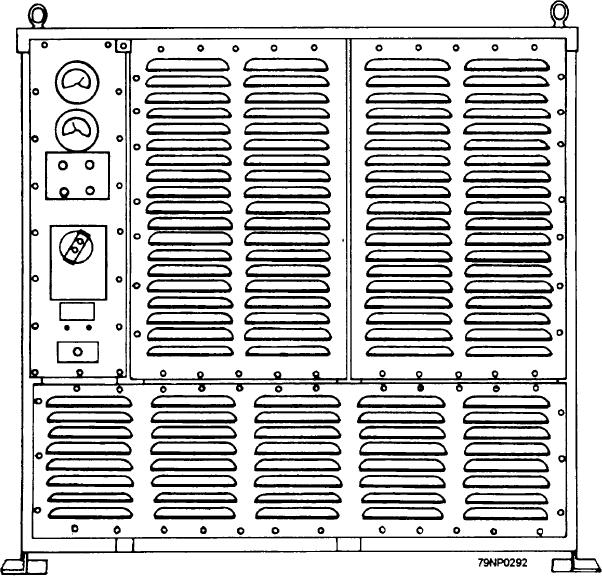
regulator receives its input from a special type of
When a load is applied to the generator, load current
frequency-sensing transformer whose voltage output
flows through the SCPT primary current windings
varies linearly on changes in generator output
causing a flux, which combines vectorially with the
frequency. This input is rectified, filtered, and
primary voltage windings flux to induce a voltage in the
compared in a Zener reference bridge, and the bridge
secondary windings. Thus, any change in generator
output is amplified by transistor amplifiers. The
load or load power factor is automatically compensated
amplified detector output (which represents the output
for. This arrangement, without the use of the voltage
regulator, would hold the generator output voltage fairly
trigger section.
constant under all load conditions.
The detector output is further amplified in the
The voltage regulator is necessary, however, for the
preamp and trigger section, and this amplified output is
high degree of regulation required. The voltage
used to control three pulse forming networks, which
regulator acts as a fine control by effectively varying the
provide trigger pulses for SCRs located in the starter
coupling between the SCPT primary and secondary
circuit.
windings.
The SCRs in the starter circuit (controlled by the
Frequency-Regulating System
weak trigger pulses from the preamp and trigger section)
provide output pulses of sufficient magnitude to fire
other SCRs located in the motor rotor control unit. The
The frequency-regulating system consists of a
output of the SCRs in the motor rotor control unit is fed
motor rotor control and resistor unit and a frequent y
through three large resistors (about 3,000 watts). These
regulator. The detector circuit of the frequency
Figure 8-23.--Static converter, front view.
8-32

